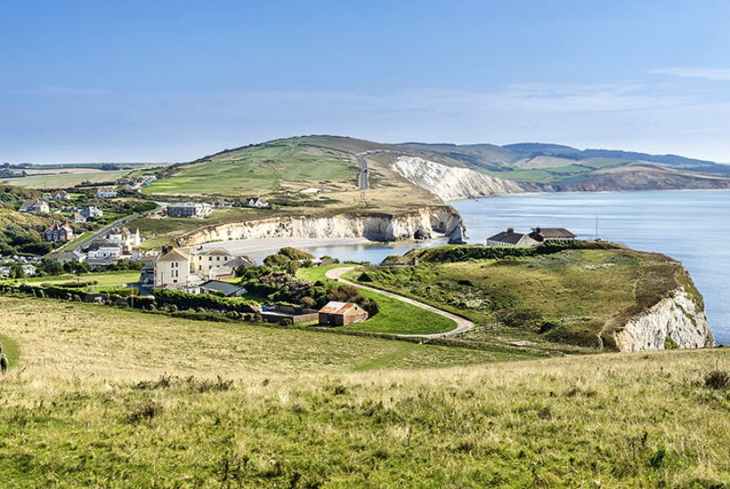I found the land of lost content last week, west of the Clee Hills in the Shropshire Housman wrote about, but hardly knew. It is deep England, thick with trees, stone-built farms that look like forts and tracks in gullies cut by ancient feet.
The villages here have rhythmic names: Bouldon, Peaton and Cockshutford — or simple Heath, where there is now no village at all, only the pure Norman chapel standing in grass with its long old iron key on a hook outside. It was built for a settlement lost at the Black Death. Few sounds here are unnatural: you hear birdsong more than cars or planes.
I was riding my horse James, with two friends on Cassie and Rubin, along paths bursting with nettles. We scrambled over streams and slippery red mud on to the Brown Clee Hill by Nordy Bank, where our horses nibbled at turf on Neolithic ramparts.
There is no better way to get the feel of the place you are in, above the ground but travelling slowly enough to sense changes you miss in a car. The parkland of the Burwarton Estate gave way to the fringes of the Midlands, where we rode through wheat fields and eyed up hunt jumps before we climbed into the marches, heading for friends who live outside Craven Arms, the only town to be built by a railway junction named after a pub. At friendly Tugford Farm we stabled our horses and ourselves, and commiserated with Cassie, who had been disgracefully kicked by her friend James as they raced around in celebration at eating the greenest grass of their lives.
Amid all this: the castles, the half-timbered barns and the big old inns which line the turnpike road from Much Wenlock to Ludlow, there was power, too in the flashes of failed modernity. On Abdon Burf the hill fort was quarried away a century ago and the remains of the cable railway which carried the hard black dhustone away still lie rusting there. Titterstone Clee Hill is capped by strange radar domes; and on the slopes below, as our horses drank at a field trough, we found a cemetery which marks the site of the Wheathill Bruderhof, a happy refuge opened by German idealists in 1942, looking for somewhere the Nazis might never come.
A few years later their blond-haired commune was caught in a Pathé news report made with the sort of cheery optimism our media age has lost, led by a prototype bearded Jeremy Corbyn, all allotments and ghastly communal eating. Of course it didn’t work out in the end — voluntary equality never does — and part of the site is now a caravan park, through which we cantered, leaving hoof prints in grass of golf-course-green neatness. ‘Do Not Jump’ said a stern sign on the gate at the end — evidence that the Ludlow Hunt also comes this way.
And the next day we went on west, on to Wenlock Edge, where routes run for miles through England’s temperate rainforest. Under the trees we called out a half–remembered Kipling poem: ‘If you enter the woods/ Of a summer evening late…/ You will hear the beat of a horse’s feet.’
The poem ends: ‘But there is no road through the woods.’ In Shropshire, though, there still is and it was wonderful.






Comments